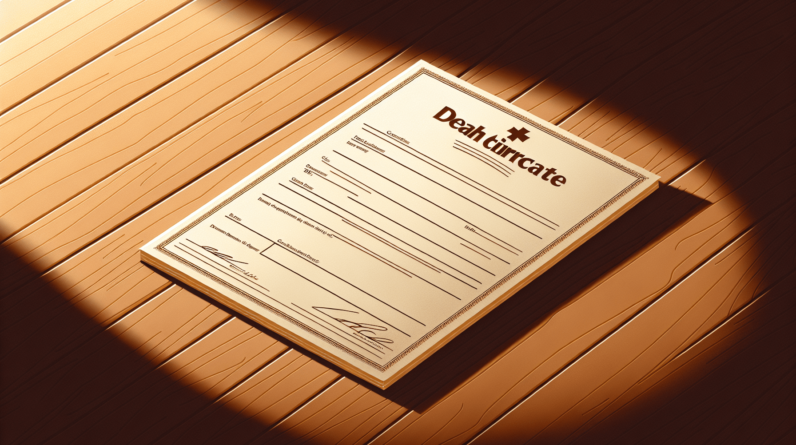Have you ever wondered what options are available for burying the cremated remains of your loved ones? Well, I’m here to provide you with some insights. According to my research, burying cremated remains is indeed a viable and meaningful option. From my experience, many individuals choose to bury the ashes in various locations, such as cemeteries or private grounds. Our data show that this act not only allows for a physical resting place but also provides a sense of closure and peace for the bereaved. So, if you’re contemplating whether you can bury the cremated remains, rest assured that this is a common and heartfelt choice for many.
Legal Requirements
When burying cremated remains, it is essential to be aware of the legal requirements that vary from jurisdiction to jurisdiction. Different regions may have specific regulations and permits that need to be followed in order to ensure a lawful burial. It is crucial to familiarize yourself with the laws of your particular area to avoid any complications or penalties.
Jurisdiction specific regulations
Each jurisdiction has its own set of regulations governing the burial of cremated remains. These regulations may specify the type of permits needed, the depth at which the remains should be buried, and any restrictions on burial locations. It is important to research and understand these regulations before proceeding with the burial to ensure compliance with the law.
Permits and paperwork
Obtaining the necessary permits and completing the required paperwork is an essential step in burying cremated remains. This may include requesting a burial permit from the local authority, obtaining a certificate of cremation, and filling out any necessary forms. Failure to comply with the permit and paperwork requirements can lead to legal issues, so it is crucial to ensure that all necessary documentation is obtained and completed correctly.
Choosing a Burial Location
Selecting a suitable burial location is a significant decision when it comes to laying to rest the cremated remains of a loved one. There are various options available, each with its own considerations and benefits.
Public cemetery options
Public cemeteries are a popular choice for burying cremated remains, offering a dedicated and well-maintained space for burial. These cemeteries typically have designated areas specifically for cremated remains, offering a peaceful and respectful final resting place. It is important to research and contact local public cemeteries to inquire about their policies, services, and availability.
Private property considerations
Burying cremated remains on private property may be an option for those seeking a more personal and intimate burial location. However, it is crucial to consider the legal and logistical aspects associated with this choice. Depending on your jurisdiction, there may be specific regulations or permits required for burials on private property. Additionally, it is important to obtain the owner’s permission if the property is not owned by you. Always consult with local authorities and seek legal advice to ensure compliance with the law.
Preparing the Burial Site
Before burying cremated remains, it is necessary to adequately prepare the burial site to ensure a dignified and secure final resting place. This involves several steps and the use of specific equipment and tools.
Site preparation steps
The first step in preparing the burial site is to choose a suitable location within the chosen cemetery or private property. It is advisable to select an area that is easily accessible and protected from potential disturbances. Once the location is determined, it should be cleared of any debris or obstructions, and the soil should be prepared to ensure ease of burial.
Equipment and tools needed
To properly prepare the burial site, some equipment and tools may be required. These may include shovels, rakes, wheelbarrows, and other gardening tools. Depending on the soil composition and conditions, additional equipment such as pickaxes or a mechanical digger may also be necessary. It is essential to gather all the required equipment and tools before starting the site preparation process.
Container Options
When burying cremated remains, you have various container options to choose from. The choice of container depends on personal preferences, environmental considerations, and any cultural or religious requirements.
Biodegradable urns
Biodegradable urns are becoming increasingly popular due to their eco-friendly nature. These urns are made from natural materials that break down over time, allowing the cremated remains to return to the earth naturally. Biodegradable urns are often made from materials such as recycled paper, bamboo, or plant-based materials. They offer a sustainable option for those concerned about the environmental impact of burial.
Traditional urns
Traditional urns are usually made of durable materials such as metal, ceramic, or wood. These urns provide a more permanent and decorative option for burial. Traditional urns come in a wide range of designs and styles, allowing for a personalized and aesthetically pleasing choice. They may also offer features such as engraving or customization to honor and remember the loved one.
Additional considerations
When choosing a container for burial, it is important to consider factors such as durability, aesthetics, and any specific requirements dictated by cultural or religious beliefs. It is advisable to consult with funeral professionals or experts in the field to ensure the chosen container meets all necessary criteria.
Environmental Impact
Burying cremated remains can have both positive and negative environmental impacts, depending on various factors such as the burial location, container choice, and local ecosystem.
Effect on soil and groundwater
When cremated remains are buried, they can have a positive effect on the soil by providing valuable nutrients. Ashes contain trace elements that can enrich the soil and support plant growth. However, it is crucial to consider any potential negative effects on groundwater quality. It is important to bury the remains at a sufficient depth to prevent any leaching of harmful substances into the groundwater.
Impact on surrounding flora and fauna
The burial of cremated remains can also have an impact on the surrounding flora and fauna. The introduction of nutrients from the ashes can promote the growth of plants and contribute to the local ecosystem. However, it is vital to be mindful of any potential disturbances or disruptions to existing habitats. Choosing a burial location that minimizes impact on local wildlife and vegetation is essential.
Religious and Cultural Considerations
Religious and cultural beliefs often play a significant role in the decisions surrounding burial practices. It is essential to respect and consider these beliefs when burying cremated remains.
Each religion’s stance on burial
Different religions have varying beliefs and practices when it comes to burial. Some religions, such as Christianity, Islam, and Judaism, have specific rituals and requirements for the disposition of cremated remains. Others, such as Buddhism and Hinduism, may view cremation as an integral part of their funeral traditions. Understanding the unique perspectives of different religions can help guide the decision-making process and ensure that burial practices align with personal beliefs.
Cultural practices and rituals
In addition to religious considerations, cultural practices and rituals often influence burial choices. Some cultures have specific customs and traditions that dictate the handling, placement, and memorialization of cremated remains. It is important to be aware of and honor these practices when burying cremated remains, as they hold significant meaning for families and communities.
Memorialization Options
Memorialization allows for the remembrance and honoring of the deceased. When burying cremated remains, there are various options available for creating a lasting tribute.
Markers and monuments
Markers and monuments provide a visible and tangible way to commemorate the burial site. These can include headstones, plaques, or engraved stones that display the name and vital information of the deceased. Markers and monuments offer a focal point for remembrance and provide a sense of permanence.
Landscaping and gardening ideas
Another way to memorialize the burial site is through landscaping and gardening. Planting flowers, shrubs, or trees in the vicinity of the burial site can create a peaceful and natural memorial. Additionally, creating a garden or dedicating a specific area for reflection and remembrance can provide a tranquil space for family and friends to visit.
Ownership and Documentation
Maintaining proper ownership of the burial site and documenting relevant details is essential for legal and administrative purposes.
Maintaining legal proof of ownership
If the burial site is located on private property, it is crucial to maintain legal proof of ownership. This may involve keeping copies of property deeds, relevant permits, and any legal agreements or documentation associated with the burial. By maintaining accurate and up-to-date documentation, you can ensure that the burial site remains legally protected.
Recording burial details
In addition to ownership documentation, it is advisable to record and keep track of pertinent burial details. This may include the exact location of the burial site, the date of burial, and any specific instructions or requests related to the disposal of cremated remains. Maintaining detailed records can help in the future for family genealogy, administrative needs, or potential future relocation of the remains.
Costs and Financial Considerations
Burying cremated remains may involve various costs and financial considerations that are important to be aware of and plan for.
Burial and cemetery fees
Burial and cemetery fees can vary significantly depending on the location, cemetery type (public or private), and any additional services or amenities offered. It is essential to research and inquire about the costs associated with the chosen burial location, including any ongoing maintenance or upkeep fees.
Additional expenses to consider
In addition to burial and cemetery fees, there may be other expenses to consider when burying cremated remains. These can include the purchase of a suitable container, any memorialization options chosen (e.g., markers or landscaping materials), and any legal or administrative fees associated with the burial process. Taking these potential expenses into account can help ensure that you are prepared financially for all aspects of the burial.
Emotional and Psychological Impact
Burying cremated remains can have a profound emotional and psychological impact on individuals and families dealing with grief and loss.
Grieving process
The act of burying cremated remains can serve as a significant step in the grieving process, providing a sense of closure and a tangible way to honor and remember the deceased. It can offer a physical place for individuals to visit and find solace. However, it is important to acknowledge that the grieving process is personal and unique to each individual, and people may experience a range of emotions throughout this journey.
Family and friends’ opinions and support
When considering the burial of cremated remains, it is essential to take into account the opinions and feelings of family and friends. Consulting with loved ones and acknowledging their perspectives can help ensure that everyone feels involved and respected in the decision-making process. Additionally, seeking support from family, friends, or even professional counselors can provide valuable guidance and assistance in navigating the emotional and psychological aspects of burying cremated remains.
In conclusion, burying the cremated remains of a loved one is a significant decision that involves various legal, ethical, and emotional considerations. Understanding the legal requirements, choosing a suitable burial location, preparing the site, selecting the appropriate container, considering the environmental impact, respecting religious and cultural beliefs, exploring memorialization options, documenting ownership and burial details, considering costs, and recognizing the emotional and psychological impact are all important aspects of the burial process. By taking the time to carefully research and consider these factors, you can ensure a respectful and meaningful final resting place for your loved one.






